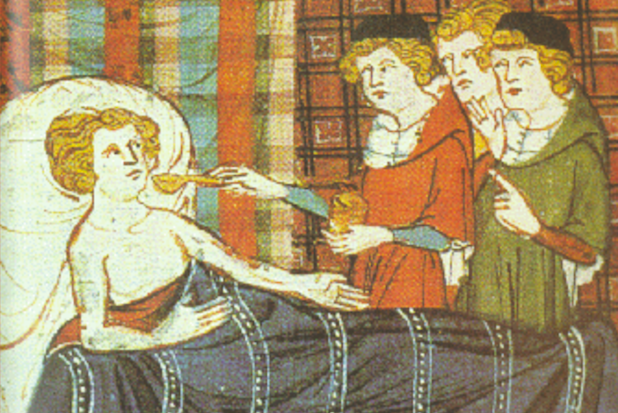Medieval medicine doesn’t have a great reputation, it’s fair to say. But one of its recipes may help us tackle the great curse of 21st-century disease control – the growing ineffectiveness of antibiotics.
In April 2014, the World Health Organisation warned that we were entering a ‘post-antibiotic era’, an age in which drug resistance could render routine infections deadly. We do seem to be entering this age rapidly; the news is relentless. Now the US Centres for Disease Control are warning that a multidrug-resistant strain of food poisoning, the eerily named Shigella, has reached American shores from abroad.
Indeed, physicians and scientists are surprised at how quickly pathogens have been adapting to the so-called antibiotics of last resort, including a class of drugs called carbapenems.
Last week, however, an odd bit of news penetrated the gloom. Microbiologists were able to kill the superbug MRSA (methicillin-resistant Staphylococcus aureus) – not with a sophisticated new drug, but with a concoction made from a recipe in Bald’s Leechbook, a 10th-century medical textbook housed in the British Library.
Christina Lee, an expert in Anglo-Saxon literature at the University of Nottingham, showed the recipe to researchers at Nottingham’s Centre for Biomolecular Sciences. The instructions were for an ‘eye salve’, a remedy containing garlic, onions, wine, and cow bile that is prepared in a copper vessel. The medieval salve was, it turned out, rather impressive as a germ killer.
The Nottingham scientists then sent the substance to Kendra Rumbaugh, a microbiologist at Texas Tech University, in the United States. Rumbaugh tested it against MRSA and, as she told NBC News, found the concoction worked ‘as well as if not better than vancomycin’, the potent antibiotic currently used against MRSA.
No one knows why this millenium-old mixture killed such a stubborn microbe. Each of the ingredients has some level of antibacterial power. Garlic, for instance, contains a sulphur compound called allicin that has been shown to kill drug-resistant strains of E. coli and Staph bacteria, as well as certain fungi and parasites. It has also exhibited antiviral activity.
In 2004, researchers at the University of East London published the results of a study that tested allicin against MRSA. They found that allicin, in certain concentrations, could kill the bacteria and was therefore a suitable candidate as a topical treatment.
None of the old eye salve’s ingredients on its own killed the bacteria, however. Dr Steve Diggle, an associate professor at Nottingham who was involved in the research, said in an email that ‘when you see a very potent effect, an active ingredient has often been purified and concentrated. We simply used raw crushed garlic which is not effective on its own’.
Pure allicin, however, is unstable: for the 2004 study, the East London researchers prepared a special aqueous solution to preserve the molecule. Though garlic is a heartening prospect for further study, researchers at Nottingham think the salve’s combination of ingredients created an antibacterial synergy.
‘Our next goal is to find out why our combination of ingredients worked and whether we can find and purify the active ingredients that are important and effective together’, Diggle told me. ‘Then we might be able to construct a potent synthetic recipe.’






Comments